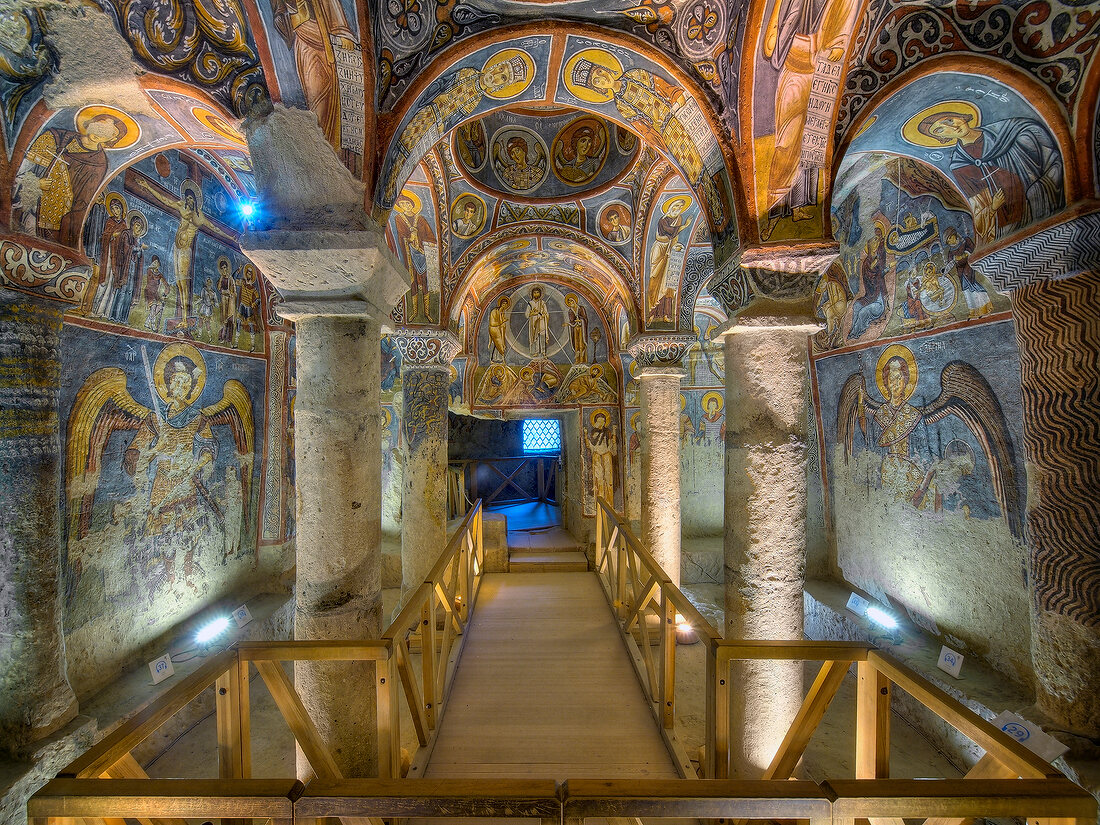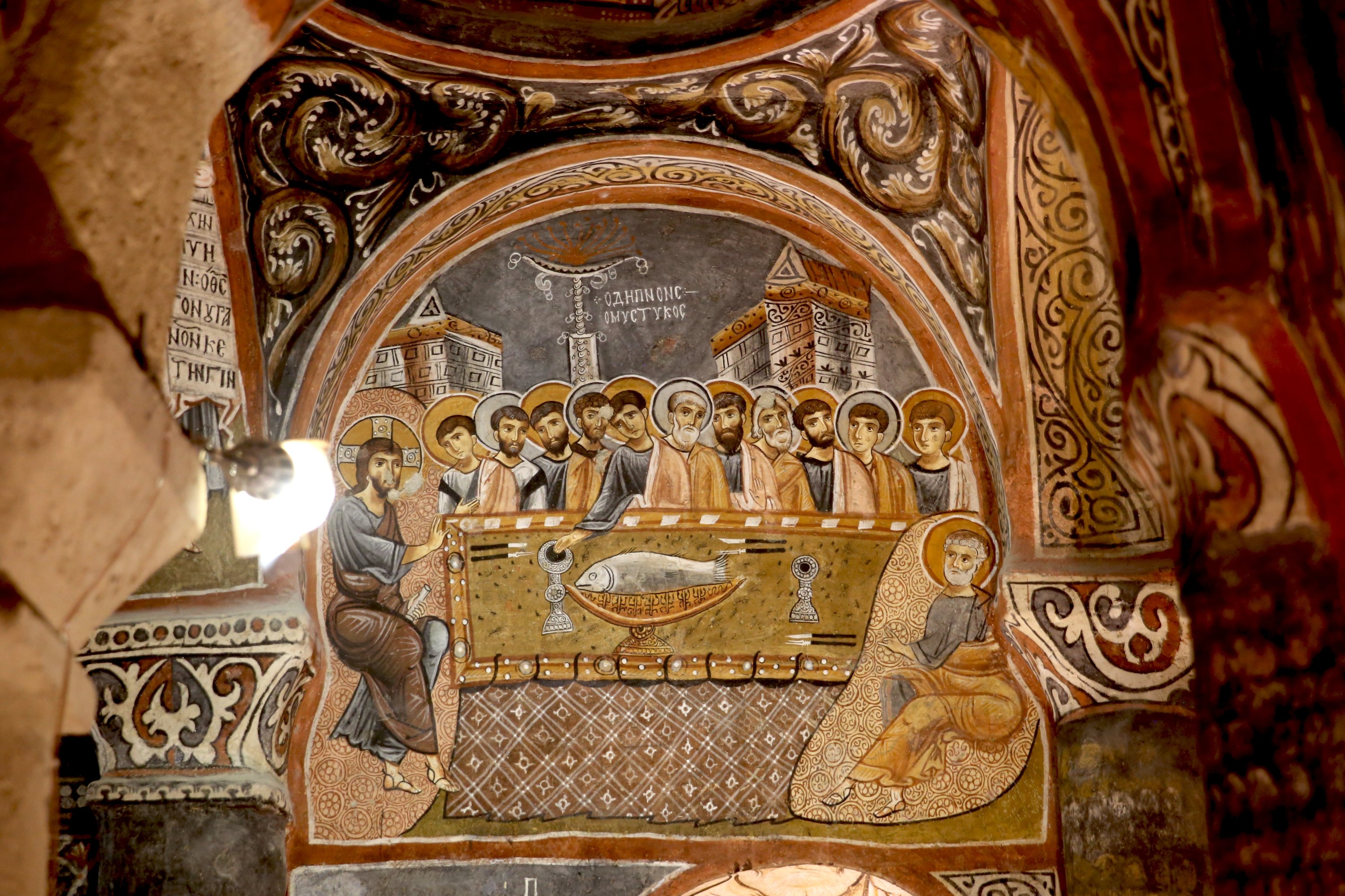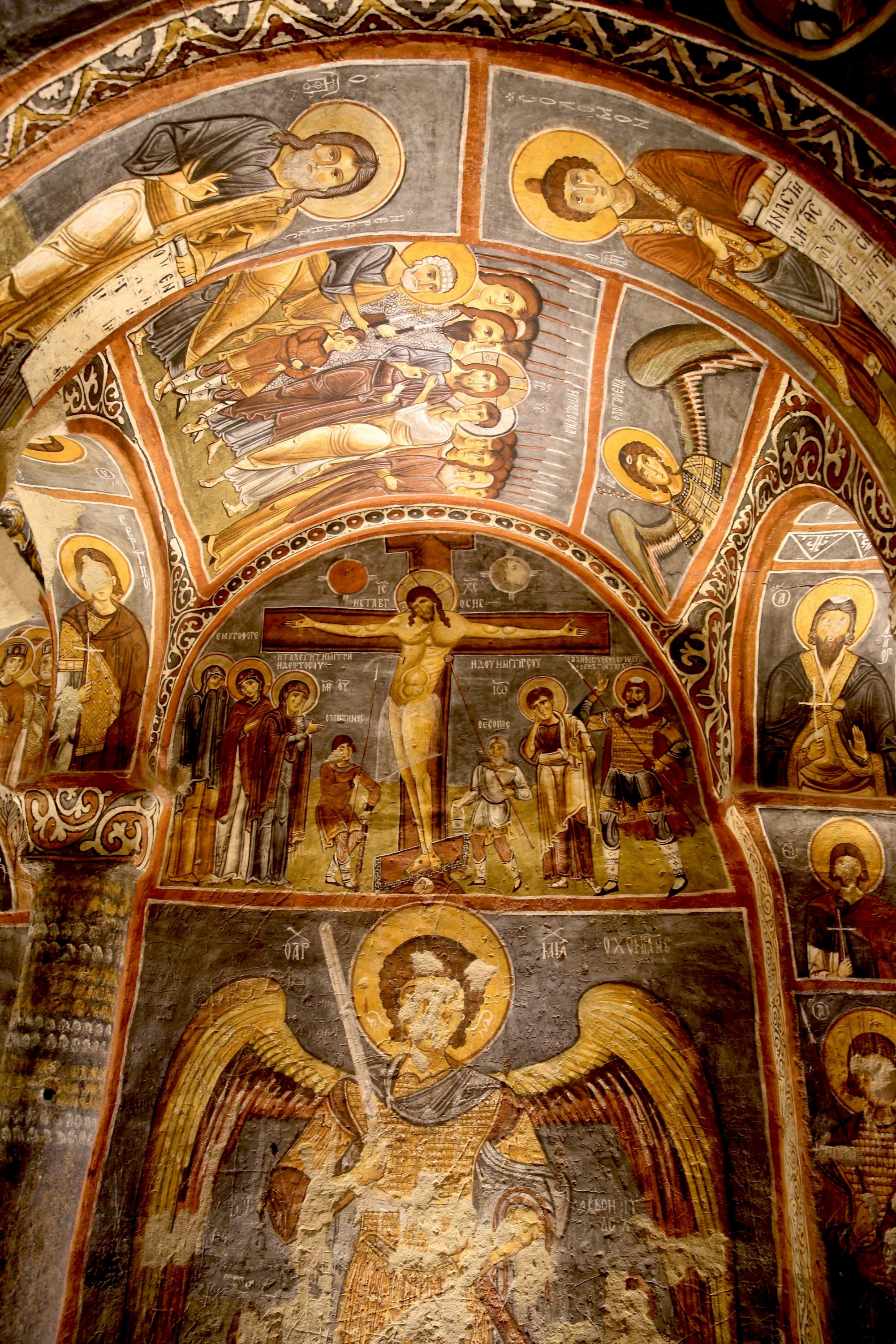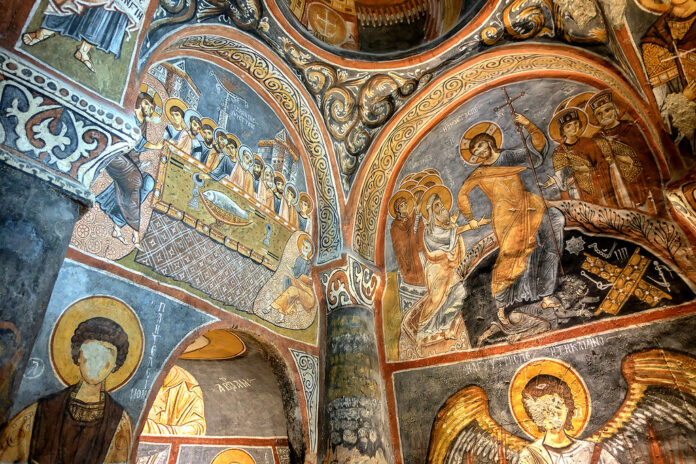Nestled within the captivating Cappadocian landscape of central Turkey, the Dark Church (Karanlık Kilise) stands as a remarkable testament to the region’s rich Byzantine heritage. Dating back to the 11th century, this rock-cut church is one of the most well-preserved and visually stunning examples of Cappadocian cave architecture and Christian art.

The Dark Church derives its name from the distinctive darkness that pervades its interior, a result of the minimal natural light filtering through its limited windows. This atmospheric quality lends the space an air of mysticism and solemnity, perfectly suited to the profound religious experience it was designed to evoke.
Carved entirely out of the soft volcanic rock that defines the Göreme region, the exterior of the Dark Church is relatively unassuming, blending seamlessly into the surrounding landscape of fairy chimneys and cave dwellings. However, upon entering the church, visitors are immediately struck by the breathtaking spectacle of its interior.

The walls and ceilings of the Dark Church are entirely covered in a remarkable series of well-preserved Byzantine frescoes, creating a mesmerizing visual feast. These intricate paintings depict a wide range of biblical scenes and religious figures, ranging from the life of Christ to the iconography of important saints and church fathers.
The style and execution of the frescoes showcase the exceptional skill and artistry of the Byzantine painters who adorned this sacred space. The figures are rendered with a striking sense of naturalism and emotion, their facial expressions and body language imbued with a profound spiritual intensity. The rich palette of colors, from the deep blues and greens to the vibrant reds and golds, lend the frescoes a radiant, otherworldly quality.

One of the most striking features of the Dark Church’s interior is the central apse, which is dominated by a colossal representation of Christ Pantocrator, or Christ the Almighty. This majestic figure, depicted enthroned and flanked by the Virgin Mary and John the Baptist, commands the viewer’s attention, serving as the focal point for the church’s elaborate iconographic program.
Beyond the apse, the narthex and nave of the Dark Church are adorned with equally impressive frescoes, depicting scenes from the life of Christ, the Virgin Mary, and various saints. The intricate compositions and meticulous attention to detail in these paintings bear witness to the exceptional artistic talent of the Byzantine masters who created them.
![Dark Church (Cappadocia) Price & Hours [Updated 2024]](https://mysterious.vncash24h.com/wp-content/uploads/2024/05/2022-091-Dark-Church-Dreamstime.jpg)
The Dark Church’s significance extends far beyond its remarkable artistic merits, as it also serves as a vital window into the religious and cultural practices of the Byzantine era in Cappadocia. As one of the best-preserved examples of a rock-cut church from this period, the site offers invaluable insights into the liturgical and devotional rituals that once took place within its hallowed walls.
Today, the Dark Church stands as a premier destination for art historians, cultural enthusiasts, and visitors seeking to immerse themselves in the rich tapestry of Cappadocia’s Byzantine heritage. Its haunting beauty and profound spiritual atmosphere continue to captivate all who enter, making it a true masterpiece of Anatolian Christian art and architecture.
